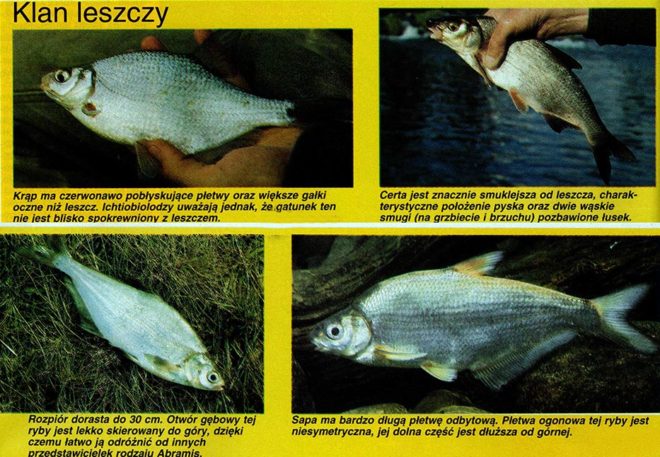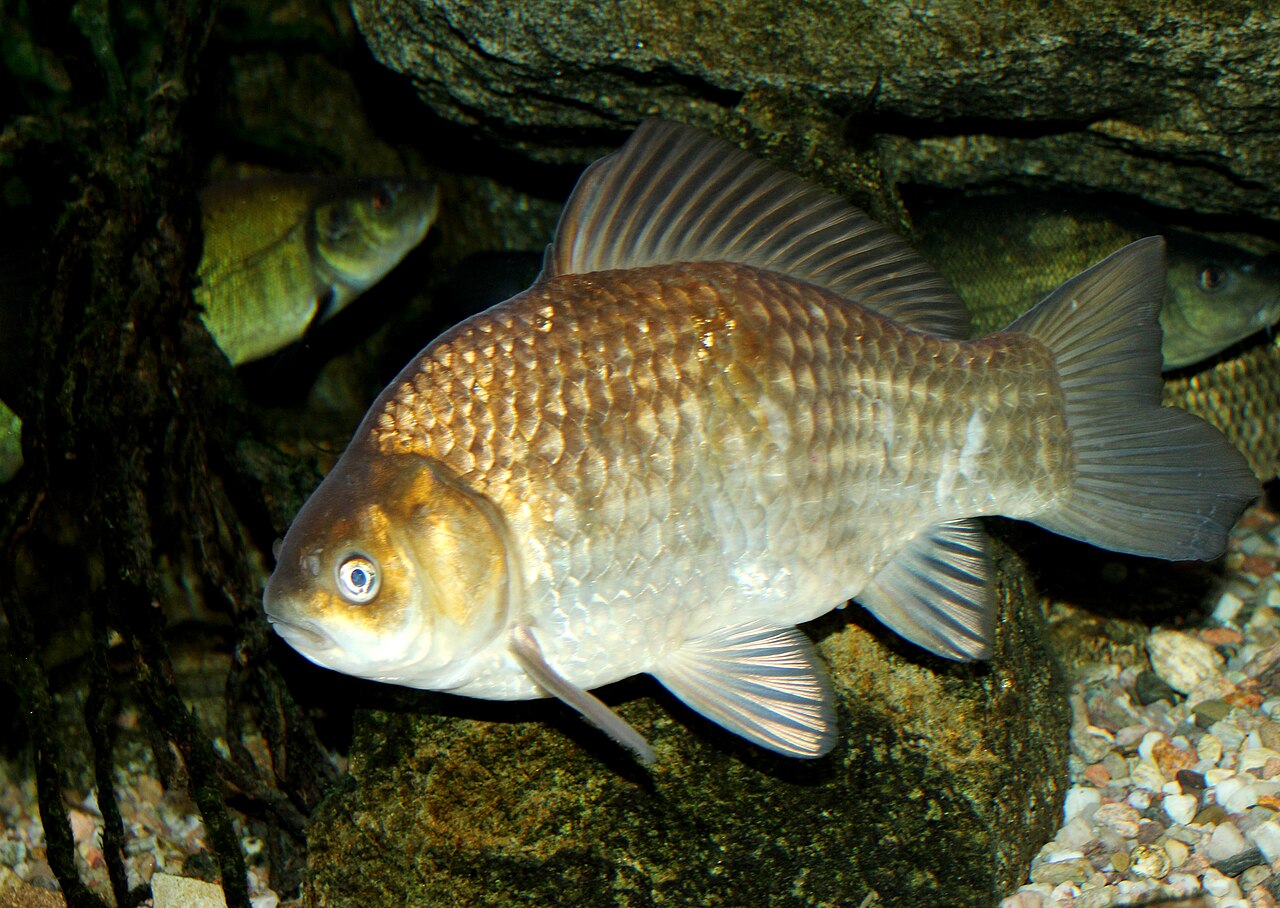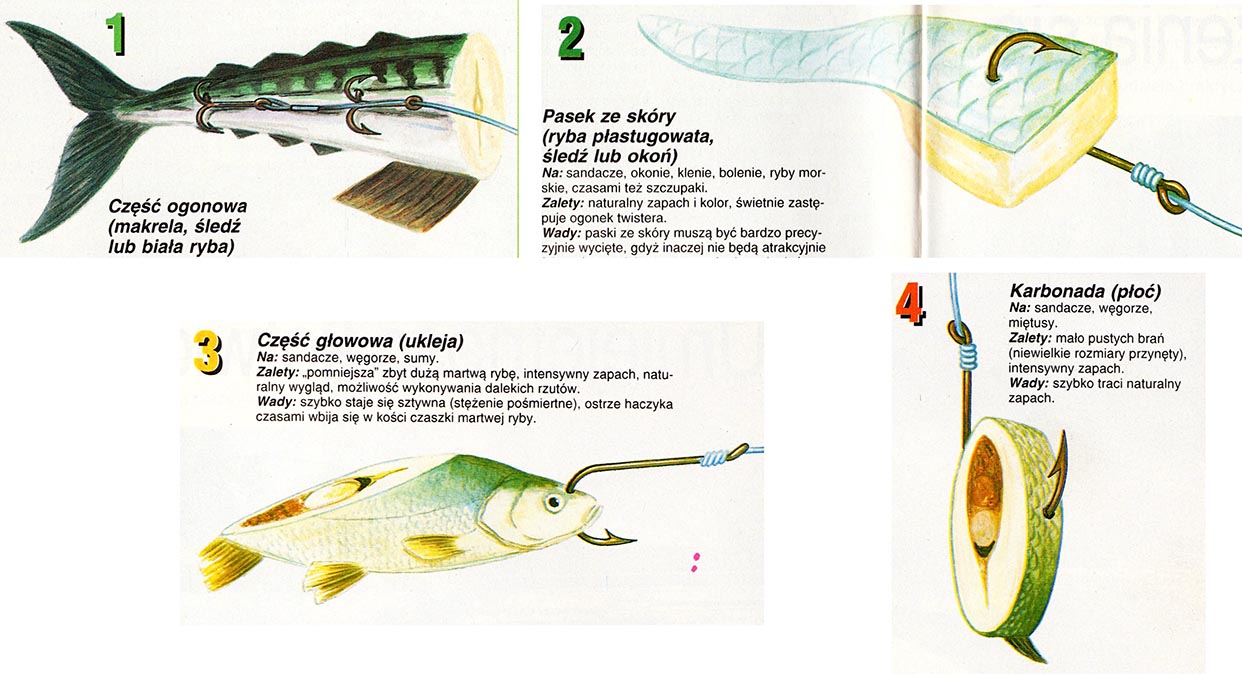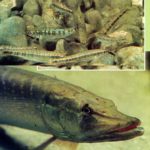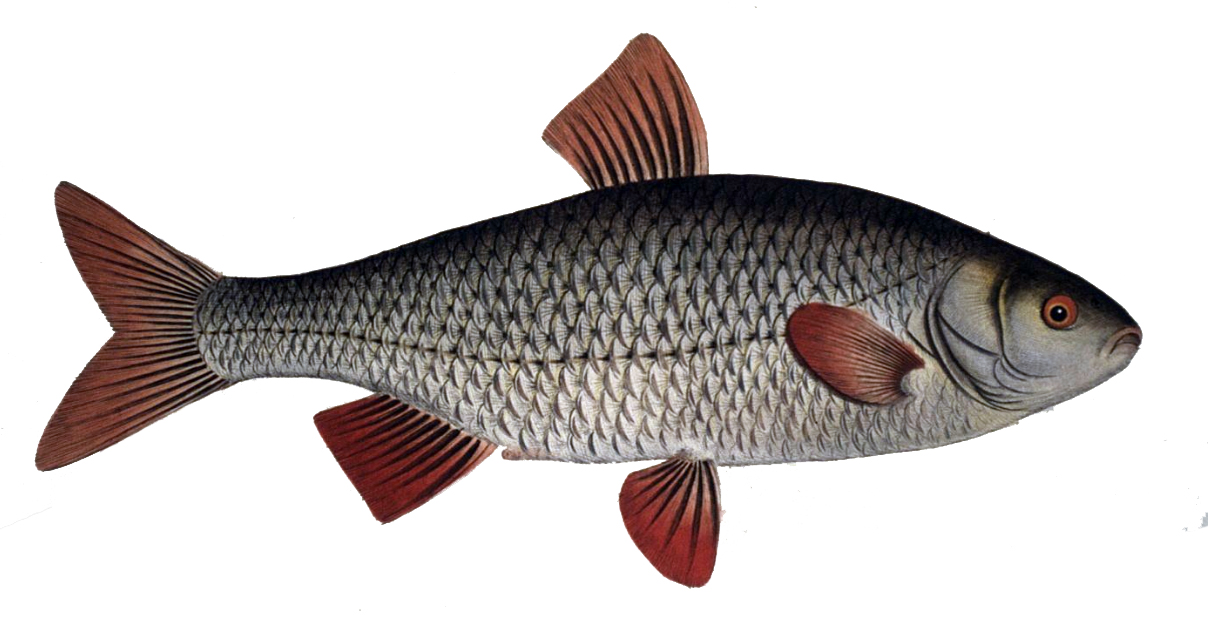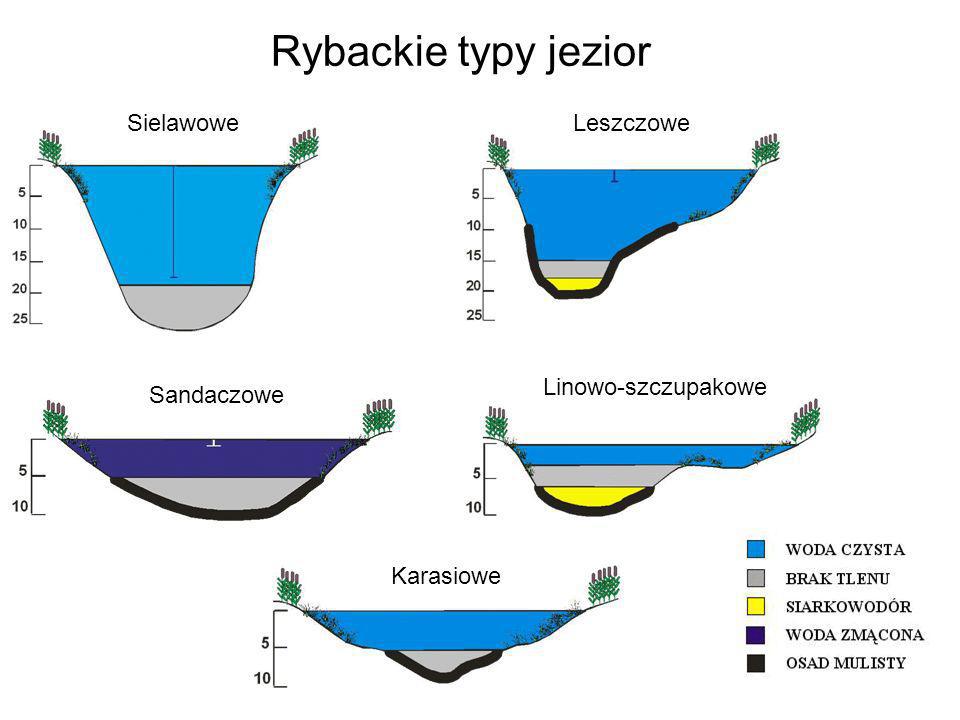Leszcze, krąpie, sapy, rozpióry i certy tworzą jeden wielki klan. Władzę sprawują oczywiście leszcze, gdyż to one osiągają największe rozmiary. Georg Alexander przyjrzał się dokładniej całej rodzince leszczowatych.
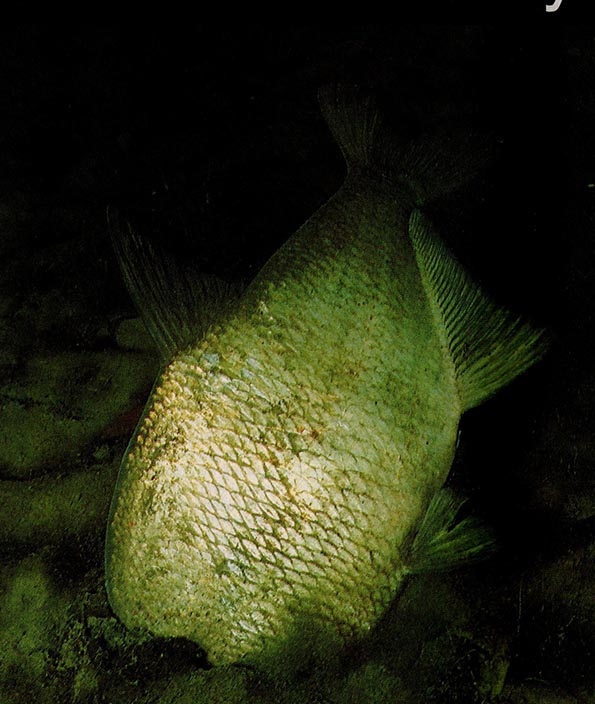 Głowa w muł, ogon do góry – to typowa „postawa” intensywnie żerującego leszcza.
Głowa w muł, ogon do góry – to typowa „postawa” intensywnie żerującego leszcza.
Cóż to był za spektakl. Tak jakby woda się gotowała. Ciemne płetwy ogonowe zawzięcie młóciły powierzchnię, dziesiątki silnie wygrzbieconych ryb kotłowało się w płytkiej zatoce w samym końcu jeziora. To, co na pierwszy rzut oka wyglądało na totalną panikę ławicy ryb w matni sieci, w rzeczywistości było intensywną grą miłosną w ostatnich promieniach zachodzącego słońca. Ławica leszczy w pełni tarła. Ryby te tak angażują się w grę miłosną, że słychać je z bardzo daleka. Leszcze są bardzo płodne. Dorosła samica składa w ciągu roku od 200 000 do 300 000 ziarenek ikry. Larwy leszczy wykluwają się już w kilka dni po zapłodnieniu i początkowo kryją się wśród roślinności wodnej rosnącej na przybrzeżnych płyciznach. Dopiero prawie po dwóch latach młode leszcze zaczynają upodabniać się do dorosłych osobników. Wszystkie ryby o długości ponad 14 cm mają już wyraźne boczne spłaszczenie ciała. Rozmiary, do jakich dorastają leszcze w dużym stopniu zależą od warunków środowiskowych, rodzaju pożywienia oraz od konkurencji pokarmowej w danym zbiorniku lub rzece. Rekordowy leszcz to ryba o masie 6,85 kg, długości 79,0 cm złowiona w 1985 roku w jeziorze wapiennym przez Zdzisław Szczęsny. Tak duże ryby należą jednak do rzadkości.
Dorodne osobniki
Dorodne osobniki o masie około 3-4 kg spotyka się już w naszych jeziorach i rzekach znacznie częściej. Są to potężne „patelnie” o długości około 60 cm. W Europie jest sporo takich akwenów, w których wędkarze regularnie łowią takie okazy (szczególnie latem).
Nasz leszcz, zwany przez biologów po łacinie Abramis brama, żyje głównie w wodach Środkowej i Wschodniej Europy. Ryby te najlepiej czują się w wolno płynących rzekach oraz w bogatych w pokarm naturalny jeziorach na północ od Alp i Pirenejów. Licznie występują też w wodach Szwecji i Finlandii. Wędkarze irlandzcy, a chyba jeszcze bardziej angielscy, wysoce sobie cenią łowienie tych ryb. Na Wschodzie zasięg występowania leszczy kończy się tam, gdzie kończy się również Europa – na Uralu, Morzu Kaspijskim i Aralskim. Leszcze, poza tym, że są bardzo płodne, są także bliżej lub dalej spokrewnione z wieloma gatunkami ryb spokojnego żeru.
Pod względem systematycznym należą do szeroko rozpowszechnionej na całym świecie rodziny ryb karpiowatych (Cyprinidae). Cechą charakterystyczną ryb z tej bardzo licznej rodziny, reprezentowanej przez około 2000 różnych gatunków ryb, jest obecność zębów gardłowych na piątym łuku skrzelowym. W Polsce żyje równo trzydzieści gatunków ryb karpiowatych (karpie i wszystkie białe ryby). A tak na marginesie -pęcherz pławny karpiowatych łączy się z uchem środkowym, w związku z czym ryby te obdarzone są doskonałym słuchem.
Jakiś czas temu zauważyli, że „wzory uzębienia” (cały czas mówimy o zębach gardłowych) krąpi i ryb rodzaju Abramis są zbyt różne, aby można było mówić o bliskim pokrewieństwie. Informacja istotna tylko dla dentystów i specjalistów, którzy prawdopodobnie i tak doskonale o tym wiedzą: leszcze, rozpióry i sapy mają po pięć jednorzędowych zębów gardłowych (5-5), natomiast zęby gardłowe krąpi układają się dwurzędowo (2-5, 5-2). Krąpie są więc całkiem odrębnym gatunkiem białych ryb. Nie zmienia to jednak faktu, że są one konkurentem pokarmowym leszczy, gdyż zajmują dokładnie tę samą niszę ekologiczną.
Różnica w połysku
– Nie mam pojęcia czy jest to leszcz, czy krąp. Nie widzę żadnego połysku – głośno zastanawia się wędkarski żółtodziób. -Ejże, przyjrzyj się trochę dokładniej. Widać połysk i to tak, że aż w oczy kłuje. Popatrz tylko na płetwy piersiowe tej ryby. Widzisz ten czerwonawy odcień? O właśnie ten, to najlepszy dowód na to, że złowiłeś krąpia -odpowiedź doświadczonego wędkarza jest spokojna i bardzo rzeczowa.
I rzeczywiście, kolorystyka płetw jest jednym z pewniejszych sposobów na odróżnienie leszcza od krąpia. Żadna płetwa leszcza nigdy nie ma czerwonego połysku. Jeżeli u złowionej ryby na płetwach piersiowych lub brzusznych widać chociażby najdelikatniejszy czerwonawy połysk, to z całą pewnością jest to krąp.
Jeżeli zaś wszystkie płetwy są ciemnoszare, to niewątpliwie jest to leszcz. Jeszcze pewniejszym sposobem na rozróżnienie obydwu tych gatunków jest wielkość gałek ocznych. Co prawda krąpie nie należą do „wielkookich” ryb, jednak średnica ich gałek ocznych jest zawsze większa od „długości” zamkniętego pyska widzianego z boku. U leszczy otwór gębowy jest zawsze większy od oka. Krąpie trą się dokładnie tak samo jak leszcze – w dużych grupach, w płytkich, porośniętych roślinnością wodną miejscach w pobliżu brzegu.
Dla wielu wędkarzy krąpie są zwykłym chwastem – nie dość, że małe, to jeszcze bardzo ościste. Ryby te są jednak dość atrakcyjną zdobyczą podczas łowienia z lodu, gdy w środku zimy okonie nie chcą już brać, a płocie jeszcze się nie ożywiły przed zbliżającą się wiosną. Bliską krewniaczką leszcza jest bez wątpienia sapa. Rybę tę śmiało można nazwać młodszą siostrzyczką ze Wschodniej Europy, gdyż rzadko kiedy dorasta do 35 cm i masy ponad pół kilograma. Ojczyzną tej słabowitej krewniaczki leszcza są wody uchodzące do Morza Czarnego i Kaspijskiego. Sapy są raczej rybami rzecznymi, czasami można je spotkać także w Dunaju i jego dopływach. Jeszcze nie tak dawno były bardzo licznym gatunkiem ryb. Od małych leszczy można je odróżnić na podstawie wyjątkowo długiej płetwy odbytowej. Poza tym płetwa ogonowa sapy jest asymetryczna. Przyglądając się jej nieco dokładniej wyraźnie widać, że dolna część płetwy ogonowej jest dłuższa od górnej.
